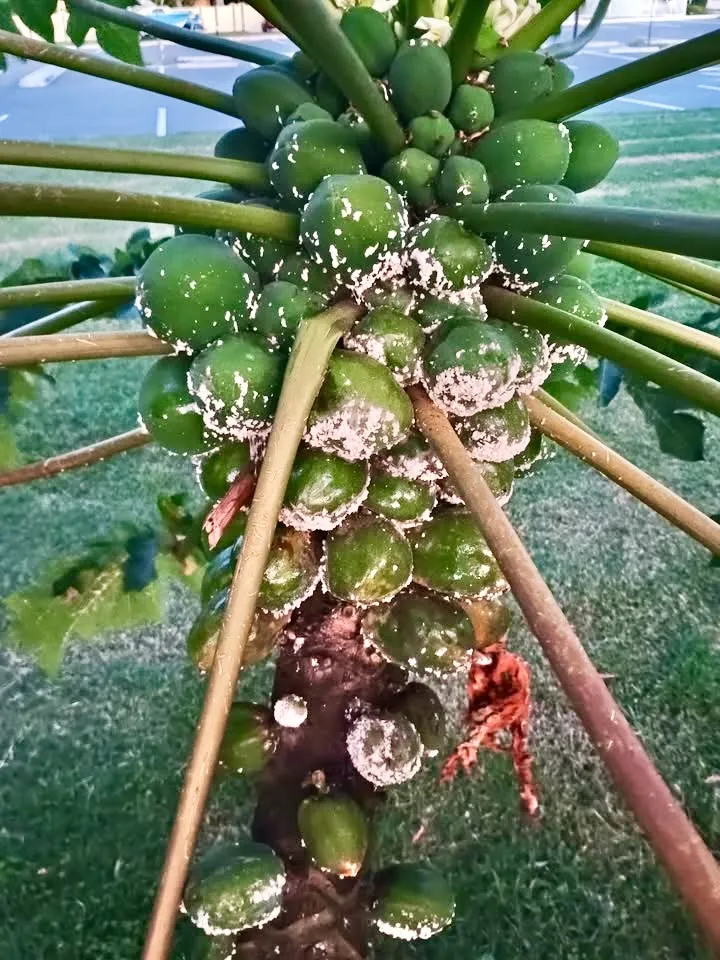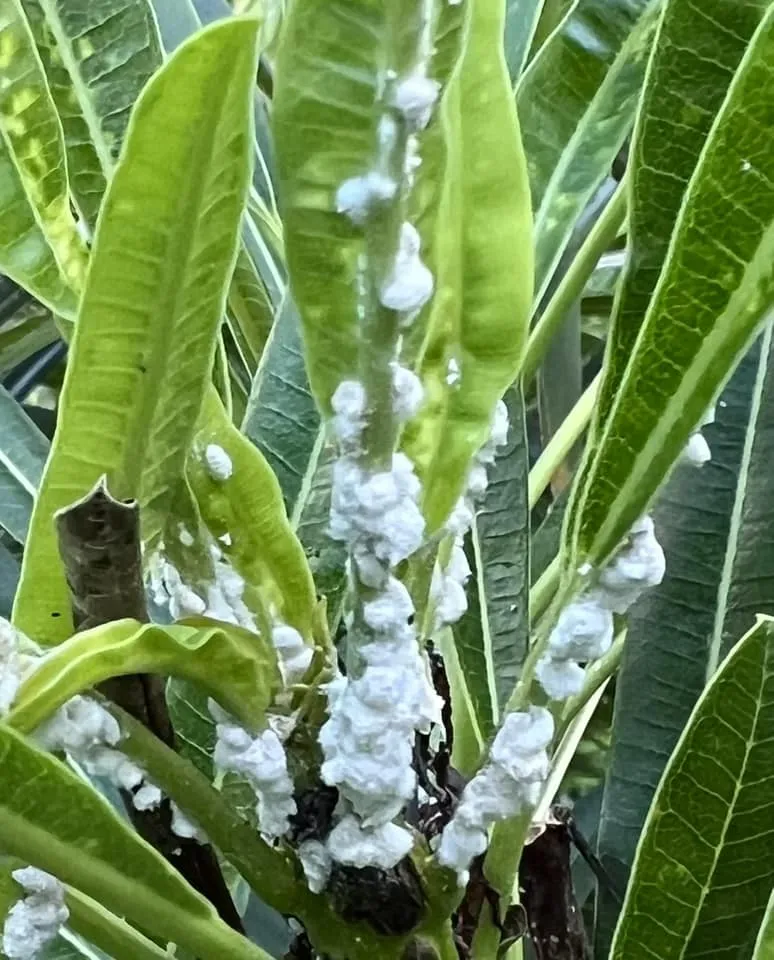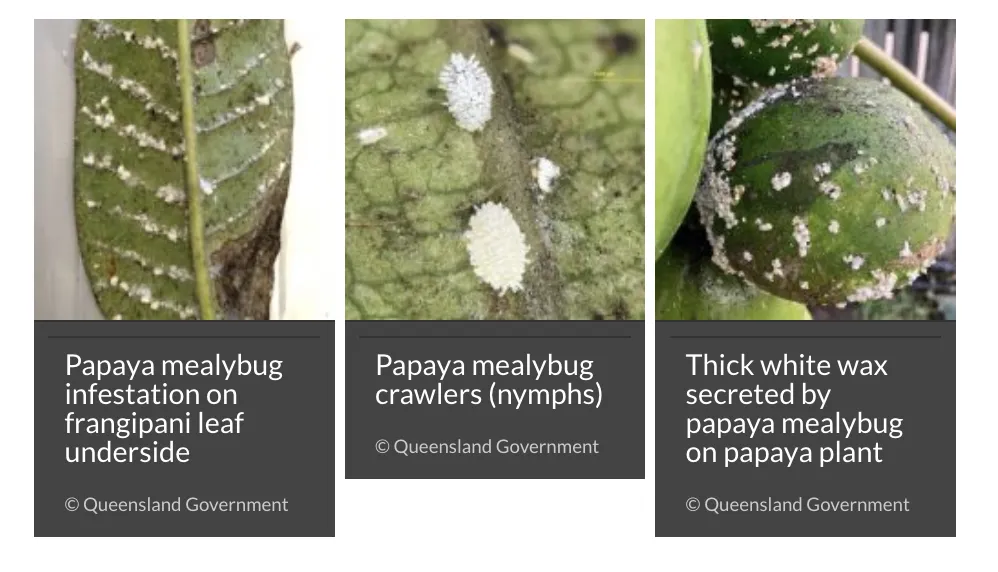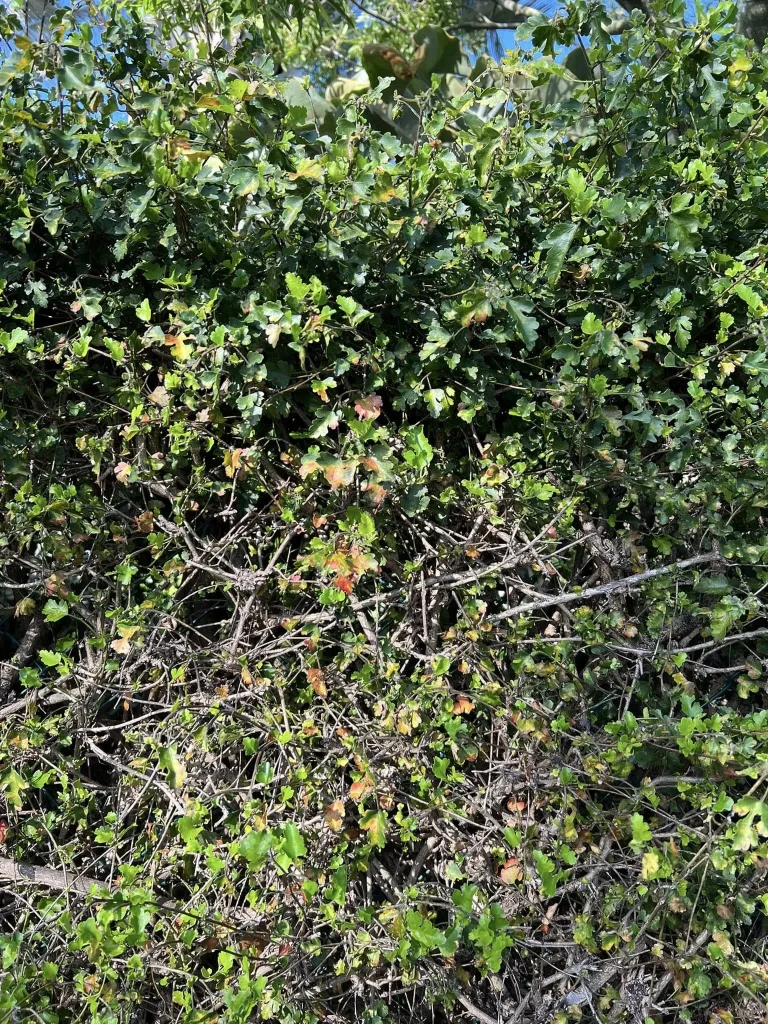ABC TV presenter Jerry Coleby-Williams keeps a record of all the species he discovers in his garden in Brisbane and shares them on Facebook. He has recently posted photographs of a new species but says this one is an unwanted pest called papaya mealybug.
Papaya mealybug (Paracoccus marginatus) is 2-3.5mm long, and bulky for a species of mealybug. It has a yellow body covered with white wax and a fringe of filaments. The eggs are yellow and laid in an egg sac. It is native to Central America and was first detected in Australia in Darwin in July 2023.
“Finding it settling in my Brisbane garden in January 2025 shows how fast this problem pest gets around,” says Jerry, urging gardeners to watch out for it on papaya, frangipani and hibiscus although it has been recorded on around 200 species.
Since 2024, it has been found in South East Queensland and Townsville. An alert on the Queensland government website, ask that any sightings in other areas are reported to Biosecurity Queensland on 13 25 23 or online.
Each female can lay around 600 eggs in a short period of time, which is why they ‘appear’ almost out of nowhere Jerry explains.
“Uncontrolled, infestations can cause foliage to shrivel, become deformed, to age and drop prematurely. Infestations may also cause chlorosis (yellowing) and blotching of foliage and for plants to become stunted.”
The mealybugs also secret honeydew as they feed on sap, inviting sooty mould to grow on foliage, blackening it and reducing its capacity to photosynthesise.
Natural biocontrols include the native mealybug destroyer ladybird, Cryptolaemus montrouzieri, various species of lacewing, and certain species of bird.
Jerry also has been controlling it with organic insecticides.
“In my experience in my garden, the spread of this pest is so rapid that biocontrols alone are insufficient. It is well known that all biocontrols need a steady supply of food in order to survive, so it follows that even the most effective never fully succeed.
“Quick control can be achieved by spraying with organic certified products including neem oil, horticultural spray oil (including white oil) or horticultural soap.
He advises to apply any sprays with care so as not to cause damage to the plant and make things worse.
“It is important to only apply white oil, neem oil or other horticultural oils on days when the temperature will not reach or exceed 30C as they may temporarily interfere with transpiration, burning foliage.
“And don’t hack off affected branches, you’ll rob the plant of energy when it needs it most.
“In my experience, three applications three weeks apart should provide quick and lasting results for all kinds of sap-sucking pests, not just mealybug. Be sure to coat both sides of foliage, all stems and branches of affected plants. The better the coverage, the more successful the result. Always spray in the cool of the morning in calm conditions and ideally on a cloudy day.”
To see more advice from Jerry in his garden, follow him on Facebook.









